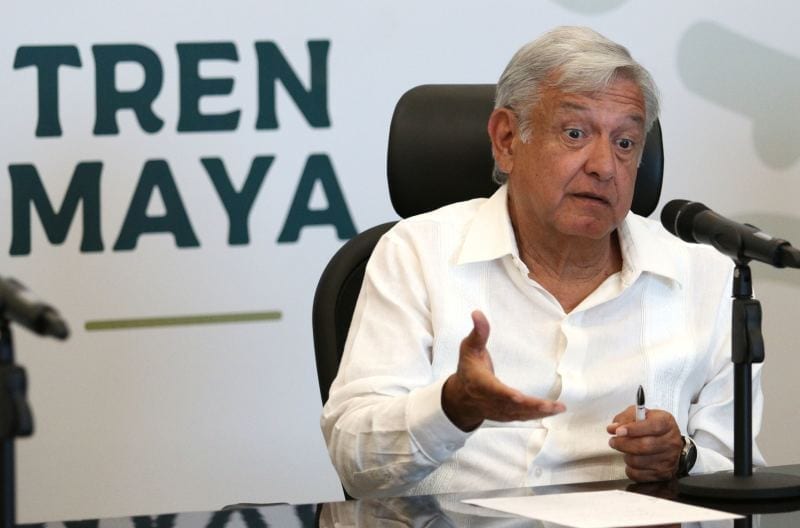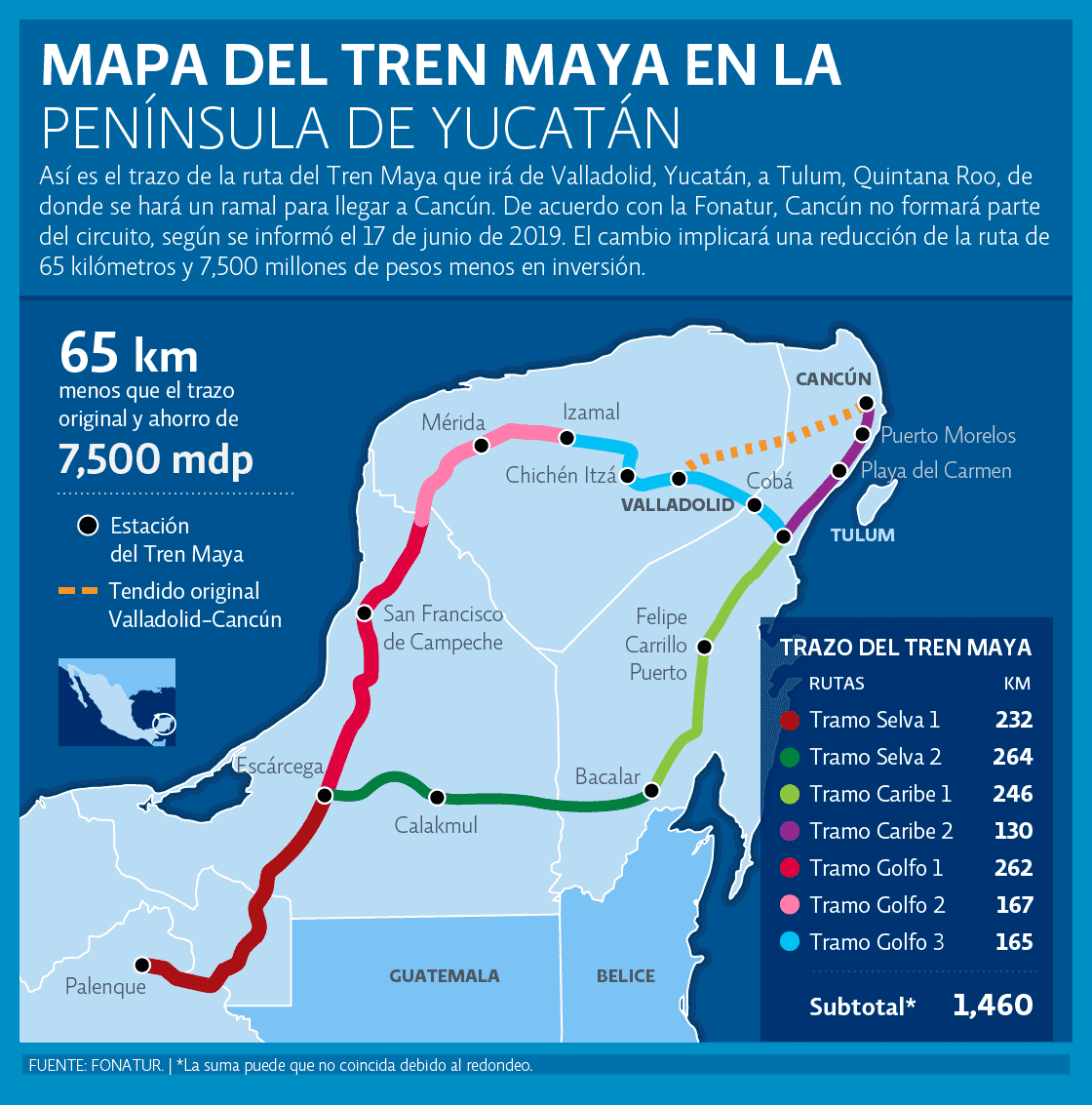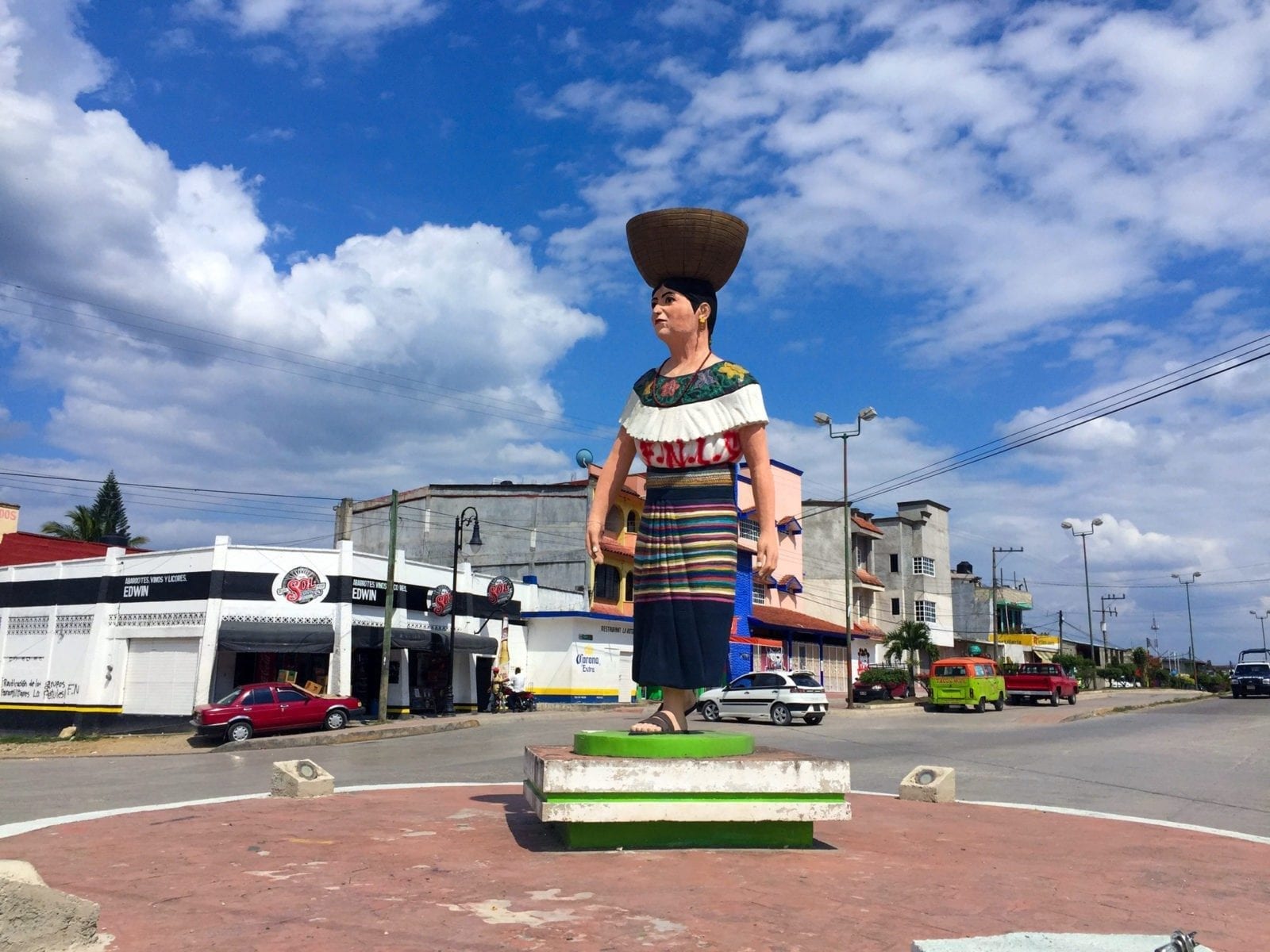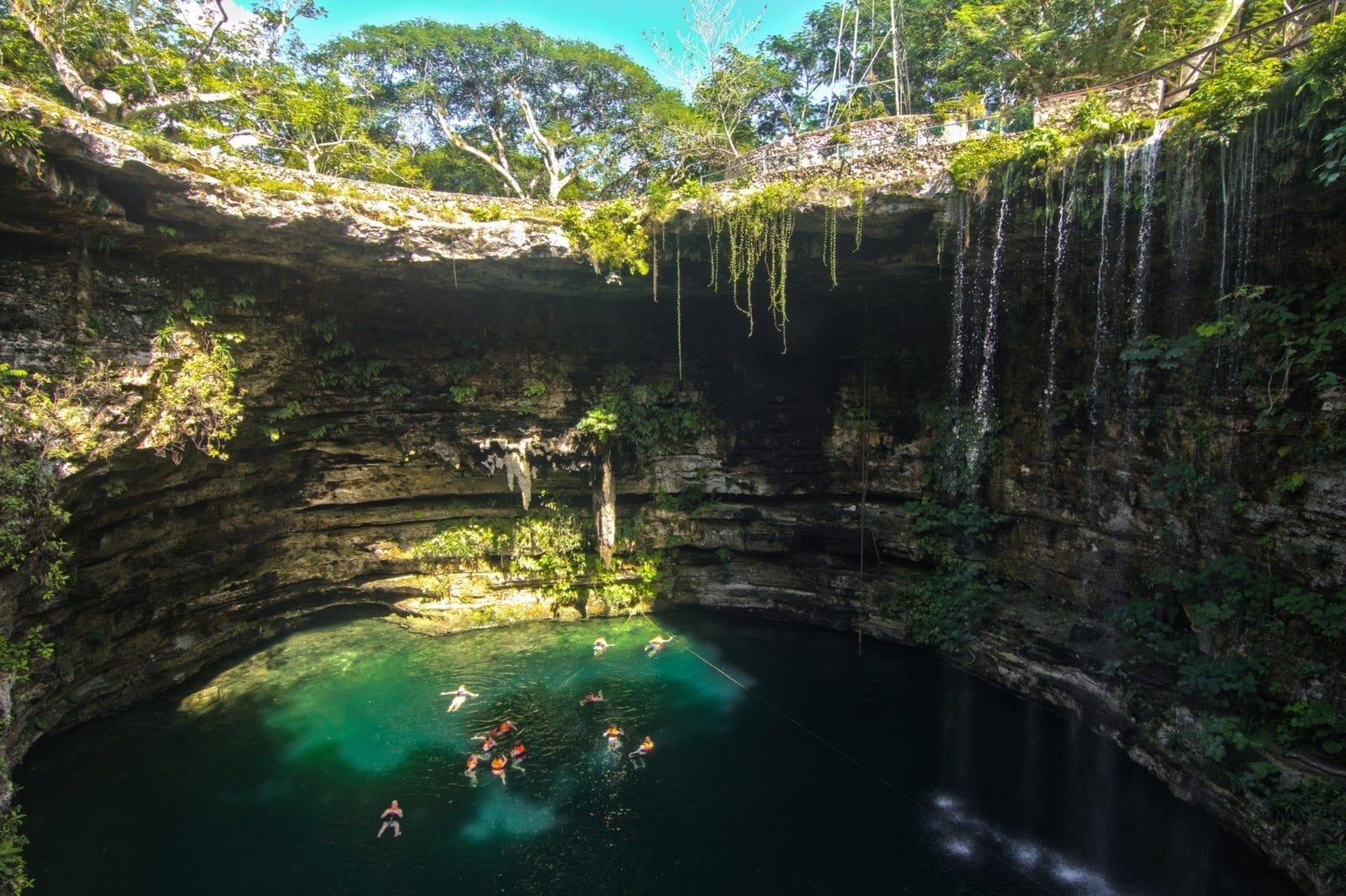Mexican megaproject threatening the regional ecosystem
Ecocide, the annihilation of the pre-Hispanic traces, urbanization of eco–parks and five years of construction in the strategic peninsula of Central America… Although it may seem like a synopsis of Mel Gibson’s film ‘Apocalypto’, that’s an overview of the Mayan Train megaproject that is getting billions in the middle of the economic crisis.
Let’s have a look at the risks of the project and the benefits of the corporations involved, learn more about the Mexican approach to sustainable development and the role of freshwater in our new material.
The Mexican president Andres Manuel Lopez Obrador (AMLO) indicated this May that nothing could stop the railway project Tren Maya (Mayan Train): no matter if that’s the Covid-19 pandemic, national and international eco-alarmism or the GDP decline.
The destructive railway project is AMLO’s top priority and masterpiece since the presidential campaign of 2018. The average overall length of the project is 1525 km and its cost amounts to $6.2 billion USD. Tren Maya is a part of the Mexican National Development Plan for 2019–2024 despite being daily cluttered with new contempts and proclamations. Given the volatility of Mexican peso and inaccurate planning, it’s highly likely that the project cost would be consistently rising and funds misused.

The construction of the Tren Maya is financed by public funds, but Mexican companies would not always benefit from it. First contracts were assigned with no tender procedures last year. FONATUR, Mexican National Fund for Tourism Promotion, signed direct contracts for consultancy service with experienced lobby-market players all at the service of transnational corporations. The cost-effectiveness and multilateral beneficial effect of the Mayan Train were unanimously confirmed by PricewaterhouseCoopers (PwC), Steer Davies & Gleave y Woodhouse Lorente Ludlow (CMS Group). Environmental, financial and social risks were left without attention. Still, that’s just a modest showcase illustrating the approach to official procurement guidelines: 45 out of 102 contracts were awarded directly, bypassing bidding procedures.
The total cost of these direct contracts reaches $1.7 billion USD. This year’s Mexican megaproject budget is already surpassed in the first semester. It provoked that some other large-scale initiatives didn’t receive any funds, but the Mexican president is persistent when it comes to his creation.
The Mayan Train would pass through more than a hundred of municipalities in Tabasco, Campeche, Quintana Roo, Yucatan and Chiapas and would affect not only the traditional lifestyle of the Mayas but of several dozens of other indigenous peoples.
Regardless of the epidemiological situation, the Mayan Train keeps on its way. Neither the contradictory and doubtful environmental impact assessment nor the indignation at all social levels can stop it. Construction contracts for the five first route sections are awarded, but project stages deadlines are unclear. The review of the feasibility study goes in parallel with transfers of land from individuals and wildlife reserves to start construction.
There’s always some likelihood that foreign companies on a subcontract or cession basis would by the end of the day execute major construction contracts. This way, the funds of the Mexican treasury (and taxpayers) would smoothly flow in favour of transnational corporations. If no dramatic changes happen, construction of the Tren Maya would start by the end of 2020.

The indigenous communities of the Yucatan Peninsula are now facing something similar to the experience that Native Americans when the Transatlantic American Railway was built in the 1860-s. The difference is that in those days railway transport really meant progress and was a key element of economic development.
The Mayan Train would pass through more than a hundred of municipalities in Tabasco, Campeche, Quintana Roo, Yucatan and Chiapas and would affect not only the traditional lifestyle of the Mayas but of several dozens of other indigenous peoples as well. United Nations Human Settlements Programme (ONU-Hábitat) and the National Institute of Indigenous Peoples (INPI) confirm that consultations with the local community had serious irregularities and minimal inclusion. Just some 5% of registered voters were informed on the Tren Maya project, according to INE, the National Electoral Institute. The promotion campaign among poorly educated local communities uses common phrases and keeps silent about negative effects, linking future local welfare to the existence of the train route.

The supporters of the project, headed by the Mexican president, proclaim a boom in social and economic development once the project is commissioned. Among the promised benefits are new tourist routes, almost a hundred thousand new jobs and the development of commercial transport infrastructure.
Still, these declarations resist no critics or long-term effect assessment. This project is likely to create even more social inequality, postponed unemployment, crime and drops in tourist flow. The Mayan Train network is a kind of wireframe for the massive culture of consumerism, so harmful to the harmonious balance of nature and the human which is a distinctive feature of the Yucatan peninsula.
The Mayan Train keeps that straightforward pace on its way to ecocide and destruction. In the context when several Mexican cities are already facing a deficit in drinking water, the Mexican government’s policy is a recipe for disaster in terms of the water supply crisis.
Neither it is mentioned that the new jobs would mostly be low-skilled and concentrated in construction and service sectors in tourist areas. To a large extent, they are supposed to be seasonal or temporary. This way, it doesn’t seem like the Mexican government is interested in raising education, nor in diversifying the professional capacities of the indigenous communities. Therefore, that will surely increase the gap between wealth and poverty on a national scale.
In their turn, indicators for the tourism sector are apparently impressive and even utopian. The aim of the project promoters to increase the number of visitors by up to 7500% in some areas deserves attention… This way, the number of visitors to the Calakmul bio-reserve in Campeche is supposed to skyrocket up to 900,000 per year from the 12,000 witnessed nowadays — ambitious figures and a great threat to ecotourism. The project supporters disregard that an industrial project would destroy the authentic pre-Hispanic culture, virgin landscapes and reduce the interest of travellers in the Yucatan peninsula. Consequently, the railway network would get covered with ghost cities and comfortable posts for drug trafficking and illegal migration.

Additionally to tourism, the economy of the Yucatan Peninsula highly relies on the agricultural sector, mostly organic and traditional where rural activities are especially sensitive. Here, a large-scale project is a great threat to the quantity and quality of crops. As a result, Mexico puts under risk the rates of production and exports of tropical fruit, vegetables, honey and organic goods that have gained credence in the markets of the United States, the European Union and Russia in the last two decades.
But the Mayan Train keeps that straightforward pace on its way to ecocide and destruction. The Yucatan peninsula hides under its soils the largest reserves of freshwater in Mexico. Construction works and excessive human activity may as well harm these hydro-treasures in underground rivers and cenotes (a kind of natural wells). Contamination and interruption of water replenishment cycles are just some foreseeable risks.
Another implicit threat comes from the real estate sector: when it comes to transferring lands to private individuals and international consortiums, Mexicans put themselves in a dependent state. In the context when several Mexican cities are already facing a deficit in drinking water, the Mexican government’s policy is a recipe for disaster in terms of the water supply crisis.

Despite the scale of the environmental and economic drama, Mayan Train supporters are willfully ignoring any risks and insist on the gamble’s profitability. And here again, a lack of precision is on the surface: the economic data and the load indicators of the railway are ambiguous, short term and far from reality. As reported by PwC, passenger traffic will generate only 8% of the total income, at the time that the Chamber of Deputies of Congress published a report indicating 30%.
Many contradictions entail additional questions, doubts and eventual social disruption both in regional and national scale. The Mayan Train seems to have concentrated the ‘Worst Available Practices’: lack of alternatives, rush with contracts, populism, negligence of the public opinion, alteration of the sustainable development idea, multi-level corruption and misuse of public funds.

